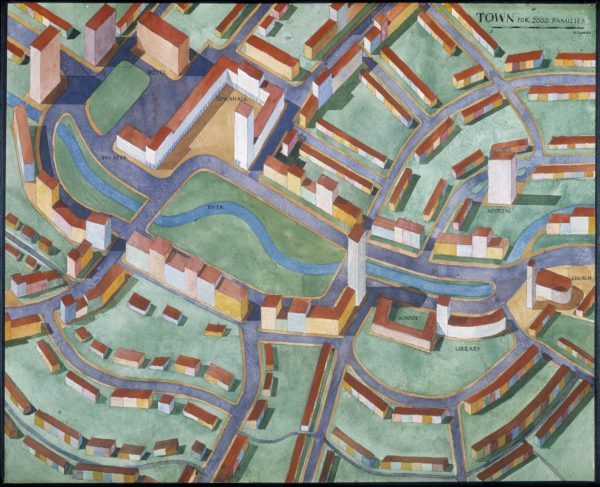Josef Frank
Josef Frank – Against Design is the most comprehensive exhibition ever devoted to this world-renowned architect and designer. It shows the diversity of Frank’s body of work – from ground-breaking architecture to brilliantly-coloured patterns and furniture. The exhibition presents unique material from the ArkDes collections never previously displayed.
As a pioneer of Modernism, Josef Frank continues to inspire designers with the diversity of his output. Amongst the important works on display in the Josef Frank – Against Design exhibition are pieces of furniture from the first interior he created in 1910 – Karl and Hedwig Tedesko’s apartment in Vienna – and items from Haus & Garten, the furnishing house that Frank ran in Vienna with his colleague Oskar Wlach.
Josef Frank was born in Baden in 1885 and came to be one of the key figures in Austrian architecture and design in the 1910s and 1920s. In 1933, because of increasing anti-Semitism, he left Austria for his wife’s home country of Sweden. From 1939 to 1947 he worked in the United States, but subsequently returned to Stockholm, where he was employed as a designer for Svenskt Tenn until his death in 1967.
Josef Frank as architect
Most of Frank’s architectural work in Austria focussed on social housing projects for the working classes. In 1932, Frank was in charge of the Werkbundsiedlung housing exhibition, which was part of Vienna’s public housing programme “Rotes Wien”. The exhibition was an important contribution to the debate on freer lifestyles in a modern age.
Alongside this, Frank also undertook commissions for more affluent families, including the well-known Villa Beer in Vienna, built between 1929 and 1931. In Sweden, Josef Frank is known as the originator of some of the first functionalist architecture in the country – five holiday homes in Falsterbo, designed between 1924 and 1936.
Most of his time in Sweden was taken up with interior design and furniture projects. As early as 1934 he was taken on as a designer for Svenskt Tenn by Estrid Erikson. The exhibition shows several unique, original sketches for some of his best-known patterns.
Against Design
Over time, Josef Frank became increasingly critical of the severity of the Modernist movement and the attitude of the designer to the notion of the Gesamtkunstwerk, or ‘total work of art’, involving the super-designed environment, standardised furniture and the invention of new forms for their own sake. Neither a personalised, artistically-inspired design nor a standardised, machine-made product were meaningful in his eyes; his own creations were inspired more by the classical tradition. It is his criticism that prompts the title of our exhibition: Josef Frank – Against Design.
Instead, he developed a softer, less restrictive approach, articulated in a philosophy of architecture and interior design he called “Accidentism”.
“All the places where we are comfortable – rooms, streets and cities – have arisen through coincidences”, wrote Frank in 1958 in the magazine Form, where the concept was first launched. Frank welcomed a less restrictive philosophy of architecture and interior design that accommodated both the high-brow and the low-brow – good and poor taste. This approach was put into practice in the “fantasy houses:” thirteen sketches for houses that Frank designed for his friend Dagmar Grill.
The exhibition features several of the original watercolours from the ArkDes collections. The houses are far removed from the austere design idiom of Modernism in terms of both style and expression. Frank summarised his new, inclusive philosophy in an unpublished manuscript: “Every great work of art must border on kitsch”.
